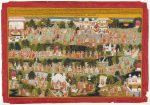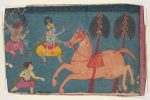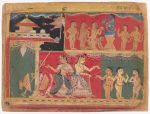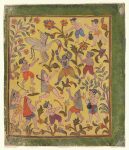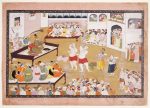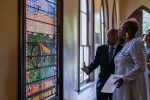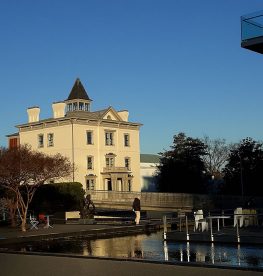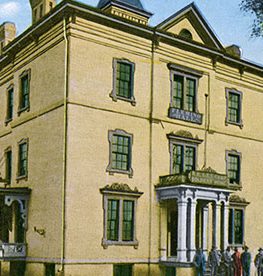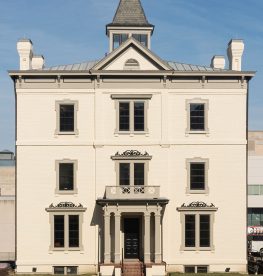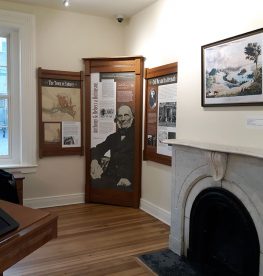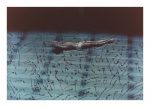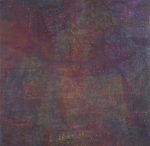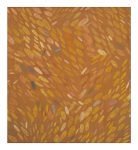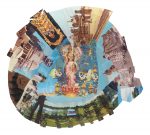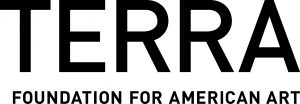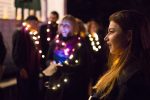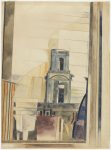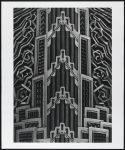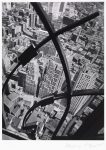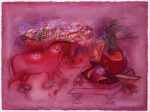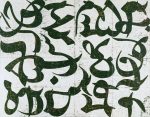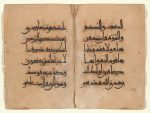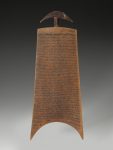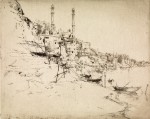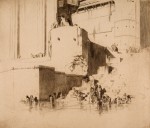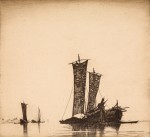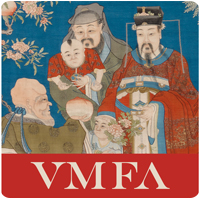The work of groundbreaking, multidisciplinary artist Howardena Pindell opens this August in VMFA’s Evans Court and 21st-Century Galleries. For nearly five decades, Howardena Pindell has explored the intersection of art and activism. This exhibition looks at the arc of this artist’s career through the presentation of early and recent paintings, video art, as well as works on paper that celebrate her singular vision and its imprint on contemporary art since the 1960s.
This exhibition is the first major survey of the New York-based artist. It features early figurative paintings, her explorations into abstraction and conceptual practices, as well as personal and political art that emerged in the aftermath of a life-threatening car accident in 1979. Sub-themes in the exhibition—such as pre-1979, memoirist, traveler, activist, and scientist— help trace themes and visual experiments that run throughout Pindell’s work up to the present.
Trained as a painter, Pindell has challenged the staid traditions of the art world and asserted her place in its history as a woman and one of African descent. Since the 1960s, she has used materials such as glitter, talcum powder, and perfume to stretch the boundaries of the rigid tradition of rectangular canvas painting. She has also infused her work with traces of her labor, such as obsessively generating paper dots with an ordinary hole punch then affixing the pigmented chads onto the surfaces of her paintings. Despite the effort exerted in the creation of these paintings, Pindell’s use of rich colors and unconventional materials gives the finished works a sumptuous and ethereal quality.
The work created in the aftermath of a 1979 car accident that left her with short-term amnesia not only reintroduces figuration into the work, but also asserts the artist’s activist sensibilities. Expanding on the experimental formal language she previously developed, Pindell has explored a wide range of subject matter, from the personal and diaristic to the social and political. Her Autobiography series not only literally and figuratively traced her body into her work, but also transformed ordinary material such as postcards from her global travels and photographs into incredible works of art. Pindell’s photo-based collages emerged as an act of memory reconstruction after the car accident. Other bodies of work, such as her Rambo series, respond to broader cultural concerns and critique sexism, racism, and discrimination at large.
Paintings and large-scale works will be shown in the 21st-Century Galleries, while additional paintings, works on paper, and a video will be shown in the Evans Court Galleries.
Howardena Pindell: What Remains To Be Seen is organized by the Museum of Contemporary Art Chicago.
Presented by

Canvas at VMFA
Peter and Nancy Huber
Mr. and Mrs. Thomas Papa
Marketing support for Evans Court exhibitions is provided by the Charles G. Thalhimer Fund.
Lead support for Howardena Pindell: What Remains To Be Seen is provided by the Harris Family Foundation in memory of Bette and Neison Harris: Caryn and King Harris, Katherine Harris, Toni and Ron Paul, Pam and Joe Szokol, Linda and Bill Friend, and Stephanie and John Harris; Kenneth C. Griffin; The Andy Warhol Foundation for the Visual Arts; and Marilyn and Larry Fields.
Major support provided by the National Endowment for the Arts, the Terra Foundation for American Art, Charlotte Cramer Wagner and Herbert S. Wagner III of the Wagner Foundation, Liz and Eric Lefkofsky, and Nathan Cummings Foundation, with the support and encouragement of Jane Saks.
Additional generous support provided by Garth Greenan Gallery.
Exhibition co-curated by Naomi Beckwith, Manilow Senior Curator at the Museum of Contemporary Art Chicago and Valerie Cassel Oliver, Sydney and Frances Lewis Family Curator of Modern and Contemporary Art, Virginia Museum of Fine Arts, and former Senior Curator, Contemporary Arts Museum Houston.
